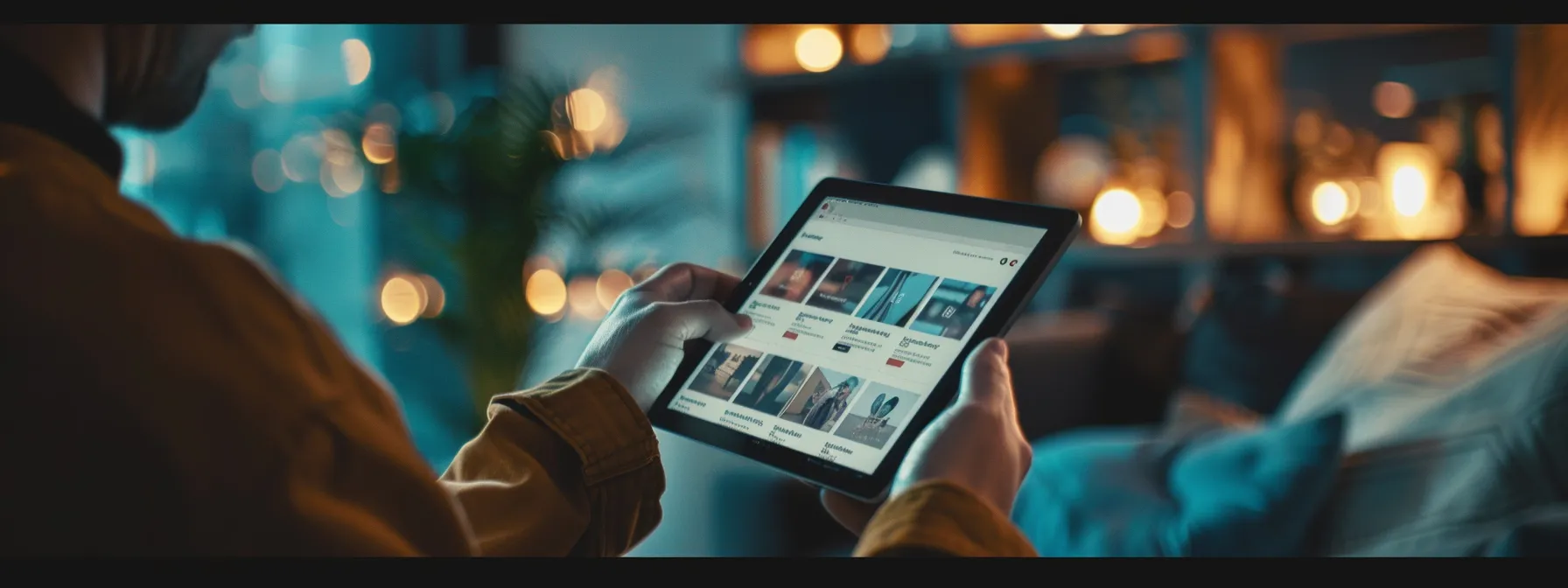Are you prepared to advance your business’s online presence with the latest web platform design trends? This post delves into the transformative technologies that are shaping the digital ecosystem. Readers will discover how artificial intelligence and pattern recognition can revolutionise user experience with smarter, more adaptive interfaces—no longer a futuristic dream, but a strategic necessity for any forward-thinking brand. Learn to harness augmented reality for deeper customer immersion, and adapt your site for voice search—a critical shift as users turn to verbal commands on their computers. With a prime focus on micro-interactions, you’ll see how the smallest design elements, from the scroll to the logo, can significantly boost user engagement. In addition, we address the pressing matter of accessibility, ensuring your website is inclusive and compliant with essential standards. As fashion in web platform design leans towards sustainability, we explore how environmentally conscious practices can be seamlessly integrated into your site. Understanding these key trends will not just elevate your digital presence but also align with your eventual goal of generating more business leads.
Key Takeaways
- AI and machine learning personalise user experiences and enhance website usability
- Augmented reality in web design fosters engagement and aids in informed purchasing decisions
- Voice user interfaces and voice-friendly content are becoming key in user engagement strategies
- Micro-interactions and animations serve as important navigational tools enhancing the user experience
- Implementing sustainable web design practices reduces carbon footprints and aligns with environmental values
Implementing AI and Machine Learning in Website Design

In the dynamic domain of web design, incorporating AI and machine learning has emerged as a cornerstone for innovation, with substantial benefits for creative adaptability and user engagement. The integration of these advanced technologies enables websites to learn from stock behaviours, tailoring content to individual preferences and enhancing accessibility for users with disabilities. The following sections delve into how pattern recognition refines website functionality, offering strategic advantages in a competitive marketplace.
Understand the Significant Benefits of AI in Web Design
The incorporation of AI and pattern recognition into website design marks a leap in innovation, offering tangible advantages like heightened usability and bespoke user experiences. For instance, a website design example embellished with AI can dynamically adjust its colour scheme to a visually pleasing pink for a user who frequently engages with that hue, or alter text sizes for better readability based on an individual’s email address tied to usability preferences. This smart adaptation not only forges a connection with users but also propels businesses ahead in a rigorous competitive environment by delivering a more satisfying and accessible website experience.
Identify Where Pattern Recognition Enhances Functionality
Pattern recognition heightens the functionality of websites by enabling systems to tap into user behavioural patterns and automate responses. This innovation transforms static web pages into interactive platforms via chatbots that provide instant, targeted assistance and support, elevating user engagement. Additionally, pattern recognition fosters hyperrealism in web interfaces, gifting users with a more personalised, immersive digital journey that harmoniously blends with their online preferences and actions.
The promise of AI and pattern recognition has just begun to shape the web. Now, imagine peering through a lens that transforms the mundane into the extraordinary.
Using Augmented Reality to Engage Customers Online

Augmented Reality (AR) is paving the way for modern web design, inviting a blend of interactivity and visual appeal that today’s users expect. Key features of AR aid in enlivening menus and elevating usability, merging minimalism in web design with immersive experiences. As businesses embrace AR to enhance customer interactions online, the careful selection of colours and strategic design elements become critical in delivering a competitive and futuristic digital presence.
Identify Augmented Reality Features Suitable for Websites
In the realm of competitive web design, augmented reality (AR) bring features that catch the user‘s attention and enhance online branding design through interactive experiences. While maintaining the elegance of minimalism, AR enables illustrators and designers to express brand stories in a way that resonates on social media and beyond. It provides a memorable interface where users can interact with products in real-time – trying before buying – and connect with the brand on a deeper level.
By integrating AR capabilities, businesses can guide users to visualize products within their own environment, significantly improving engagement and instilling confidence in purchasing decisions. This hands-on approach to customer service, fuelled by AR’s real-world application within a digital landscape, stands as a testament to a brand‘s commitment to innovation and customer satisfaction.
Integrate AR Elements to Improve Customer Interaction Online
Integrating augmented reality (AR) elements into a website can significantly advance customer interaction by enhancing the user experience design. AR invites users to engage with a brand in a vibrant and interactive environment, allowing them to visualise colour schemes in context and connect with creatives on a deeper level. This not only places businesses ahead of the curve but also redefines the landscape of customer engagement by offering a rich, immersive digital experience.
- AR provides a unique way for users to witness products in their intended environment, thus fostering informed purchasing decisions.
- Creatives can utilise AR to inject life into a color scheme, turning passive browsing into a captivating user experience design.
- Embracing AR technology helps businesses stay ahead of the curve and flourish in a competitive landscape.
As we harness augmented reality to captivate customers, the digital horizon broadens. Now, let us turn to the voice user interfaces of 2025, where words become the new pathway to browsing.
Adapting Websites for Voice User Interfaces in 2025

As the horizon of web development broadens, voice user interfaces (VUIs) stand out as a pivotal design trend, reshaping user experience and marketing strategies. Understanding voice search technology and crafting voice-friendly content are essential for businesses seeking to stay competitive. These strategies not only align with user behaviour but also strengthen digital engagement, which will be explored through the forthcoming analysis of current trends and practical adaptation methods.
Understand the Growing Trends of Voice Search Innovation
In the landscape of top web design, the prevalence of voice search innovation carves a new frontier for user interactivity. As algorithms become more sophisticated, the seamless integration of graphics and voice-responsive features is central to creating a user-centred collage of innovation and design. Businesses leveraging these voice innovations position themselves at the cutting edge, providing users with intuitive navigation and a dynamically adaptable digital environment.
Implement Strategies to Make Content Voice-Friendly
To meet the demands of the future, businesses must reframe their responsive web design strategies to accommodate voice user interfaces. Prioritising clear, conversational information delivery, while focusing on typography that complements auditory guidance, allows user interfaces to become more intuitive. Transitioning towards voice-friendly content necessitates updating the website‘s design, using gradients and typefaces that support quick information retrieval and ease of navigation, bolstering the end-user‘s journey and catering to their evolving preferences. Responsive web design
Voice user interfaces have reshaped the landscape. Now, let us turn to the subtle dance of micro-interactions, where user engagement finds a new rhythm.
Improving User Engagement Using Micro-Interactions

In the quest for optimal user engagement, forward-thinking businesses are turning to micro-interactions, a key component of the evolving culture of web design. The use of subtle animations guides users effectively, while micro-interactions serve as a direct line of communication, offering instant feedback. These trends utilise motion graphics to create an intuitive website builder experience across varying screen sizes, reinforcing brand identity with each video element applied. As we delve into these topics, a keen understanding of their benefits in enhancing user experience will be unveiled.
Design Subtle Animations That Guide Users Effectively
In the hands of a skilled graphic designer, micro-interactions become critical navigational aides that capture user attention and facilitate a smooth digital journey. Employing these subtle animations within a Squarespace template, for example, can imbue a sense of life into maximalist themes or offer a nod to tradition in more classic layouts. The strategic use of micro-animations in response to email sign-ups or menu selections not only satisfies user expectations for instant feedback but also enriches the overall aesthetic and functional experience, thereby retaining users and gently leading them to desired actions on the website.
Use Micro-Interactions to Provide Instant User Feedback
Micro-interactions are essential for magazine websites that thrive on robust user feedback mechanisms. By integrating OLED technology, subtle yet visually striking animations can convey approval or alert readers with finesse, enhancing personalization. Moreover, parallax scrolling can introduce layered micro-interactions, creating a sense of nostalgia as users navigate through time-bound stories, offering immediate, tactile responses to their virtual magazine page turns.
Micro-interactions captivate, drawing users in with subtlety and purpose. Now, we forge ahead to accessible design, where inclusivity becomes paramount in the fabric of modern web creation.
Meeting Accessibility Standards in Modern Web Design

As competitive businesses venture into the realm of digital marketing, adherence to the WCAG guidelines is paramount to ensure websites cater to all users inclusively. Mastering accessible colour schemes and contrasts is not just a matter of compliance but a strategic aspect of web design that enhances user experience. This focus on accessibility, entwined with the utilisation of artificial intelligence and mobile app integration, fortifies a brand‘s digital presence and fortifies their stance in the market.
Comply With WCAG Guidelines to Ensure User Inclusivity
In the constantly evolving sphere of web design, complying with Web Content Accessibility Guidelines (WCAG) is not only a mark of inclusivity but also a strategic necessity for businesses aiming to stand out. Adapting WordPress themes to incorporate features such as text-to-speech, keyboard navigation, and alt text for animations enhances a site’s accessibility, ensuring a broader audience can engage with the content. Moreover, as virtual reality and pattern recognition technologies advance, the fusion of these elements in design offers a learning experience that is accessible, breaking barriers for users with disabilities.
- Ensure WordPress themes are equipped with accessibility features that comply with WCAG standards.
- Embed animations that provide descriptive alt text, allowing users with screen readers to experience the content fully.
- Incorporate virtual reality elements in an accessible manner to facilitate experiential learning for all users.
Use Accessible Colour Schemes and Appropriate Contrasts
In the quest for website design excellence, the choice of colour palette becomes pivotal, especially when it allows for escapism—a growing trend that facilitates user immersion in the web experience. Effective web design harnesses the power of an accessible colour scheme, which not only aligns with the brand‘s aesthetic but also adheres to WCAG standards for contrast and readability, ensuring that all users, regardless of their visual capabilities, can navigate and enjoy the website without hindrance.
Accessibility is the foundation; sustainability is our future. Let us now navigate the path to greener practices in web design for the year ahead.
Adopting Sustainable Web Design Practices in 2025

In 2025, competitive businesses prioritise sustainable web design, recognising its impact on navigation efficiency and user experience. Reducing a website’s carbon footprint through sustainable hosting and optimising images for swifter loading are central to this imperative. These practices extend beyond the pixel level, influencing the visual hierarchy and embracing both neon vibrancy and monochrome clarity to forge an environmentally conscious, yet visually compelling, digital presence.
Reduce Website Carbon Footprint With Sustainable Hosting
As web designers forge ahead into 2025, prioritising sustainability is imperative. Adopting sustainable hosting practices significantly reduces a website‘s carbon footprint, a vital step for businesses committing to environmental responsibility. This approach resonates with consumers increasingly attentive to a brand’s ecological impact. By incorporating eco-friendly servers, web designers can ensure that the intricate geometry of their site layouts, the carefully chosen typography, and the streamlined efficiency inherent in frameworks like Tailwind contribute not just to the aesthetics of a website but to a greener digital ecosystem.
Hosting services powered by renewable energy sources usher in an era where website functionality aligns with environmental stewardship. Users experience swift navigation and seamless interaction while appreciating a brand‘s commitment to sustainability. Engaging in this practice not only addresses the ecological concerns of users but enhances a business’s reputation as a forward-thinking, conscientious player in the marketplace.
Moreover, the leverage of green practices in server management aligns with the shift towards minimalist design philosophies that reduce data transfer loads, particularly in mobile-first approaches. Thus, conscientious web creators engender a synergy between high-calibre visuals and environmental mindfulness: a combination that’s becoming a hallmark of leading-edge web presence.
Optimise Images and Media for Faster Website Loading
In the context of 2025’s website design trends, streamlining a website‘s media enhances performance and user experience. By optimising images and media for faster loading, web designers ensure that websites remain agile, retaining motion and visual effects that engage without detracting from loading times. This practice, mirroring the swift strokes of art, ensures that icons and visuals are meticulously compressed, bolstering the site’s speed while maintaining aesthetic integrity, therefore, fortifying a website‘s competitive edge in a digitally-driven marketplace. website design
Conclusion
Embracing 2025 web design trends is imperative for businesses striving to remain at the forefront of a competitive landscape. Integration of AI and AR technologies, meticulous attention to accessibility standards, and a commitment to sustainable practices significantly augment user experience and engagement. By adopting voice user interfaces and micro-interactions, brands can provide intuitive navigation and immediate feedback, essential for customer satisfaction. To secure their market position and foster a loyal customer base, businesses must prioritise these innovative and user-centred design strategies.
